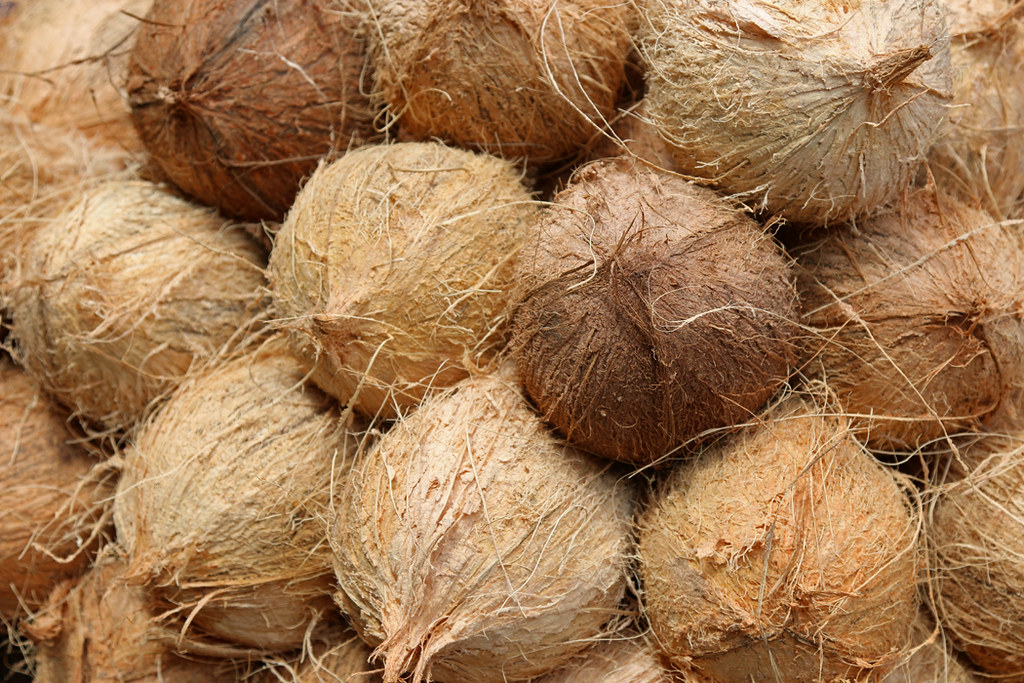International turmoil and whitefly badly hit Sri Lanka’s coconut sector
One of the top five global producers, the country saw a 40 per cent drop in production due to a fertiliser ban and the ravages from the insect. In Colombo and its suburbs people, have to queue up to buy coconuts. This is a hard blow to the economy, with exports to the United States, Germany and the Netherlands already penalised by higher shipping costs due to the turmoil in the Red Sea.
Colombo (AsiaNews) – Long queues to buy coconuts have become commonplace in Colombo and its suburbs because of a 40 per cent drop in domestic production.
Supplies have fallen significantly as evinced in last week's coconut auction in the capital, mainly due to a ban on fertiliser, damages caused by the whitefly, and increased exports.
Overall coconut production dropped to about 400,000 nuts, down from 600,000 to 800,000.
Sri Lanka is one of the top five coconut-producing countries in the world, competing with other major Asian producers like the Philippines, Indonesia, and India.
Still, its strategic position in the global market is strengthened by the quality and variety of its products. And despite the current challenges, the island nation's coconut industry has an edge on the competition in terms of product quality and innovation.
In addition to coconut products for domestic use, Sri Lanka is a major player in the global coconut industry and the fourth-largest exporter of coconut products. This sector is crucial for the country's economy, providing employment and contributing significantly to export revenues.
The industry produces a wide range of products, including coconut oil, coconut milk, dried coconut, and value-added products such as coconut water, and activated carbon.
Last year, the United States was Sri Lanka's top coconut export market, valued at US$ 132.68 million, followed by Germany, with an export value of US$ 49.67 million, and the Netherlands, with US$ 48.1 million.
“Sri Lanka’s coconut exports are categorised into kernel products, finished fibre products, and shell products,” said experts Hasitha Almeida and Thushari Galappatti, speaking to AsiaNews.
“In 2023, kernel products accounted for 51.6 per cent of the total export value, generating US$ 365.94 million. Fibre products contributed 28.2 per cent of the total export value, amounting to US$ 199.8 million, whereas, shell products comprised 20.2 per cent of the total export value, contributing US$ 142.95 million.”
However, “The ongoing conflicts in Europe and the Middle East have disrupted trade routes and economic stability in these regions, including logistical challenges, increased shipping costs, and general uncertainty in trade, contributing to the decline in coconut exports from Sri Lanka,” they explained.
“The cost of a container to Europe has increased from US$ 500 to US$ 3,000 since the beginning of the Red Sea disruptions. Due to severe economic turmoil, including debt crises in emerging markets such as Egypt and Pakistan have diminished their capacity to import goods, negatively impacting Sri Lanka’s export figures.”
According to the Coconut Research Institute of Sri Lanka, “after experiencing two bumper harvests in 2021 and 2022, the coconut yield in 2023 was 10 per cent lower and the harvest fell below 3 billion coconuts in 2023 after two consecutive years of topping 3.35 billion coconuts.”
With a poorer harvest, the supply of coconuts available for export has been reduced, directly impacting the volume of products that Sri Lanka sends to international markets.
According to the Sri Lanka Export Development Board, “one third of total [local] coconut production is allocated for the industries that manufacture value-added products for the export market and two thirds for local consumption.”
Due to lower production, these levels have changed, “with over one third of total production being picked up by the exporters and less than two thirds made available for Sri Lankan consumers.”
As a result, the price of coconuts has increased and they are not available in many parts of the island.
04/11/2021 09:58
30/10/2021 12:20
22/04/2024 11:44







.png)










